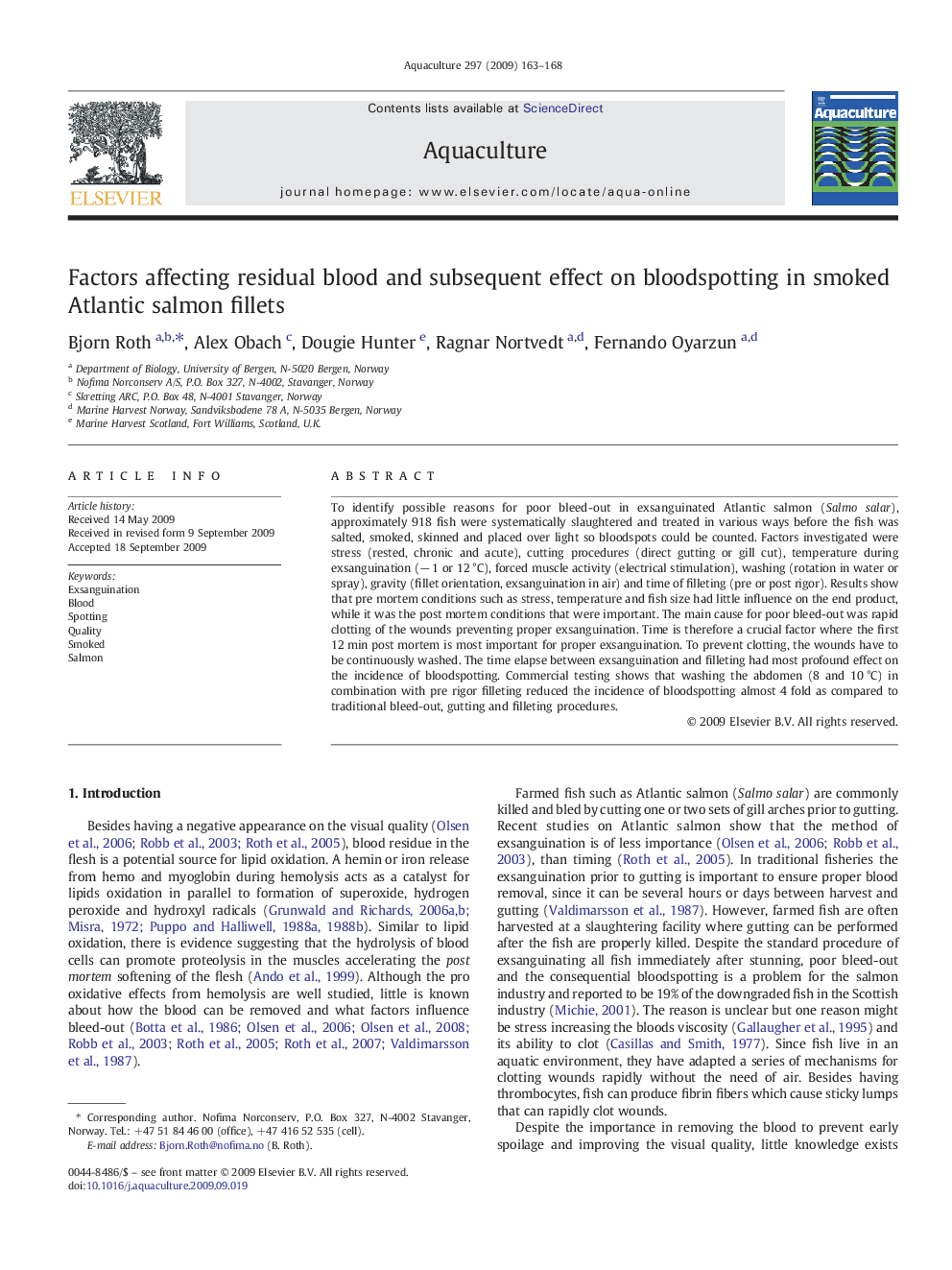| کد مقاله | کد نشریه | سال انتشار | مقاله انگلیسی | نسخه تمام متن |
|---|---|---|---|---|
| 2423812 | 1552933 | 2009 | 6 صفحه PDF | دانلود رایگان |

To identify possible reasons for poor bleed-out in exsanguinated Atlantic salmon (Salmo salar), approximately 918 fish were systematically slaughtered and treated in various ways before the fish was salted, smoked, skinned and placed over light so bloodspots could be counted. Factors investigated were stress (rested, chronic and acute), cutting procedures (direct gutting or gill cut), temperature during exsanguination (− 1 or 12 °C), forced muscle activity (electrical stimulation), washing (rotation in water or spray), gravity (fillet orientation, exsanguination in air) and time of filleting (pre or post rigor). Results show that pre mortem conditions such as stress, temperature and fish size had little influence on the end product, while it was the post mortem conditions that were important. The main cause for poor bleed-out was rapid clotting of the wounds preventing proper exsanguination. Time is therefore a crucial factor where the first 12 min post mortem is most important for proper exsanguination. To prevent clotting, the wounds have to be continuously washed. The time elapse between exsanguination and filleting had most profound effect on the incidence of bloodspotting. Commercial testing shows that washing the abdomen (8 and 10 °C) in combination with pre rigor filleting reduced the incidence of bloodspotting almost 4 fold as compared to traditional bleed-out, gutting and filleting procedures.
Journal: Aquaculture - Volume 297, Issues 1–4, 1 December 2009, Pages 163–168